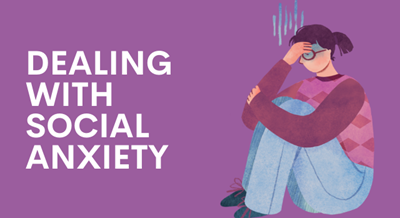
For Paula, a former service user, a bad mood can have a sustained and lasting effect on the whole day. She shares how changing your thought process can help to overcome these moods and boost positivity.
A bad mood that seems to begin innocently enough can have a sustained and lasting effect on our day. A simple thought such as “It’s raining, so I won’t go out” can set us on the wrong course for the day. Why does this matter? It matters because this type of negative thought can scupper our plans and leave us feeling under-achieving and annoyed at ourselves.
The problem with such a negative thought is that it can lead to other negative thoughts. For example, that first thought about not going out might become “well, if I’m not going out, then I don’t have to do anything”. Then that might become “since I’m not going out, I’ll just go back to bed”. So, what started out as just one negative thought can end up as half a day spent in bed and a simmering fury at ourselves. It also makes tomorrow harder - and what if it rains tomorrow?
What I have found is that the solution to such a thought is to have a plan in place to deal with this kind of negative thought – one that hijacks our whole day and raises a doubt about tomorrow - and how we will act if one comes up.
What kind of plan can we have or do we need to have? The plan needs to start a different thought process so that we put ourselves on a different thought trajectory.
Going back to the example of deciding not to go out in the rain, the thought trajectory of going back to bed is a negative trajectory. Instead, it might be more useful to straight away sit down and do a short mindfulness session. After that, change the thought process. Add a positive thought, then another, and then another, until you are on a sustained positive thought trajectory.
Here’s an example. Instead of thinking “I am not going out in the rain”, remind yourself of what going out can do for you - “going out in the rain means I can meet my friend Ann today in town. I am meeting her for lunch, and after that we are going to do a tour of the art gallery”.
Then, keep thinking of more positive things that follow: “I really love meeting Ann. We always have a great time. What’s more, I’m really getting familiar with the artists in the gallery and can see some really famous pieces. Isn’t that great? Aren’t we lucky it’s all free? And we don’t even have to leave the city to see all these great paintings. How lucky I am!”.
Do you see how feeling put out about the rain changed into “how lucky I am”? The experience of the day completely changes. Both sets of thoughts start off as a negative feeling about the rain, but putting in a first and then more positive thoughts changed it to a positive though trajectory and turned it into a happy, positive day.
Of course, not every day is happy all day, and some days are harder than others. But the good news is that, with practice, we can become very good at replacing negative thoughts with their polar opposite, positive thoughts. After some time training ourselves and practising being positive, we can begin to become positive people more than we are negative people. Before too long, we spend more time in a “good” mood than in a “bad” mood.
The nature of having a psychiatric or mental health illness, like a mood disorder or depression, means that we have to work on being positive more than people who don’t live with these. But that needn’t discourage us. We are experts by experience, and we can spot a negative thought a mile off. After a while, we can become far more positive. We who have had to be very ingenious about getting well and staying well can become a good example to others. We have learnt a lot about what constitutes happiness, how to approach it, and how to keep it. Some of the things that used to derail us are decidedly put to one side, because we have learned to approach them with a positive disposition.
Positivity is a very powerful resource. It allows us to approach our lives with confidence and determination.
Positive and negative thoughts go in very different directions. Positive thoughts lead to confidence and happiness. Negative thoughts can wreak havoc, diminish our confidence, and undermine our accomplishments. Give them no oxygen.
Of course, I am not talking here about the cut and thrust of life, the difficult things that happen that can throw us - really serious things like bankruptcy or death. All of these have to be faced, but, in those cases, we can reach out to doctors, therapists, our multidisciplinary teams.
I am talking about positive thinking here, and how we can learn to think positively, so we can be happy in the normal course of any normal day. The next day you get up and something transpires and threatens your day’s happiness, don’t engage with it. Metaphorically, step to one side. Sit down and do a mindfulness practice. Then, immediately, put in a positive thought, and keep doing that until your mood changes.
As soon as a negative thought appears, make a mental note and deliberately begin to fill your mind with as many positive thoughts as it takes to drive it out. You can do it. We all can: it just takes practice.
Thinking positively makes us positive people. When we need to be positive, we can be. So, begin today. It’s within your power to be positive - grab it with both hands.






